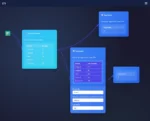
by tyler garrett | Jun 18, 2025 | Data Processing
The software world rarely provides one-size-fits-all solutions, especially when you’re dealing with data, analytics, and innovation. As projects evolve and systems become increasingly complex, merely writing more lines of code isn’t the solution; clarity, modularity, and scalability are paramount. The Builder Pattern emerges precisely as this beacon of clarity. It empowers technical teams to craft intricate systems from intuitive, straightforward components, transforming complexity into simplicity. Let’s explore how adopting this potent design pattern can streamline your software engineering efforts, optimize data strategies, and position your organization for enduring technological agility.
Understanding the Builder Pattern: Clarifying Complexity
The Builder Pattern is a creational design approach, renowned among architects and developers, for constructing complex objects sensibly and step-by-step. Rather than confronting intricate configurations or procedural dependencies in a monolithic constructor, the Builder Pattern decomposes complexity into manageable and logical portions. Imagine having to manage intricate configurations required by ETL processes—extract, transform, load— integral to analytics and business intelligence. Instead of cumbersome and error-prone constructors or extensive parameter lists, developers leverage the Builder Pattern to carefully delineate each aspect of the object’s construction. Each component becomes clearly defined and independently manageable, allowing flexible adjustments without destabilizing the entire application.
For instance, in configuring force-directed graph layout algorithms, the detailed composition of nodes, edges, and layout specifics can benefit from this pattern. Builders clarify the process, simplifying object instantiation while significantly reducing human error and misconfigurations. Resolving high-cardinality attributes is another example where the Builder Pattern can shine, especially in conjunction with well-chosen high-cardinality category encoding strategies. By clearly separating concerns during object construction, data teams efficiently handle scale and complexity.
The greatest strength of this pattern lies in its emphasis on readability and flexibility. Your technical teams gain a clearer perspective as complexity becomes transparent, ensuring a smoother development process and easier long-term maintenance. Adopting the Builder Pattern translates into sustainable software solutions that scale dynamically with business needs.
The Advantages: Leveraging the Builder Pattern Strategically
Leveraging the Builder Pattern delivers varied and compelling advantages to teams working in fast-paced data analytics and advanced software engineering environments. By exposing construction logic through meaningful builder components, the pattern dramatically elevates readability and makes the system more accessible to both newcomers and seasoned developers alike. By explicitly stating components and construction steps, engineers ensure traceability, clarity, and a more manageable codebase.
Another strategic advantage surfaces when handling complex regulatory requirements. Consider scenarios involving intricate regulatory reporting lineages and field mappings. Using builders facilitates clean separation of data constraints from domain logic, creating clearer interactions and minimizing accidental errors. Additionally, builders enable seamless integration of customization points without complicated hacks or redundant code paths. This helps avoid brittle solutions or lengthy restructuring during inevitable code modifications.
Further gains emerge around pipeline management. Builders are uniquely suited to structure complex metadata registration and tracking processes—as described in our work on robust pipeline registry implementations. Ensuring each pipeline component is systematically constructed allows powerful system monitoring, precise issue identification, and streamlined debugging efforts.
From an adoption standpoint, the strong structure, readability, and radically simplified object instantiation significantly improve adoption by developers with varying levels of experience. Technical leaders can confidently guide teams toward sustainable coding conventions, better enforced by the Builder Pattern’s inherent discipline and clarity.
Practical Implementation: Builder Pattern for Data Analytics Pipelines
One of the strongest use cases for the Builder Pattern resides in data analytics pipelines, where complex configurations and rapidly evolving business requirements call for exceptional clarity and flexibility. Managing the lifecycle and complexity of data pipelines typically involves embedding environment-specific configurations, dependencies, connectors, transformations, and multiple scenarios allowing tens or hundreds of unique pipeline variants. Builders permit a neatly implemented pipeline construction process, cleanly abstracting every relevant dimension of the pipeline assembly process into dedicated methods.
Furthermore, analytics implementations frequently require particular attention to ethical and legally compliant data gathering and analysis standards. Teams can utilize clear object construction sequences to enforce and document ethical guidelines systematically, aligning with sustainable ethical data collection and analytic practice frameworks. Builders enable teams to define and assure critical requirements clearly, remaining proactively compliant and ahead of regulations in evolving data privacy and governance landscapes.
In the specific context of analytics transformations, ETL processes often benefit enormously from Builder Pattern implementation. Developers involved in ETL workflows can establish clearly delineated ways to define sources, target databases, transformation logics, and validation schemas by employing builder sequences. Such setups simplify transformations, reduce complexity, and enhance reliability, as detailed precisely in our dedicated resource on the significant role of ETL in data analytics and business intelligence.
Scaling Your Business: Builder Pattern’s Innovation Impact
Strategically, leveraging the Builder Pattern isn’t limited strictly to technical realms. Its organizational impact on innovation, collaboration, and business agility can be profound. By breaking complexity into explicit, accessible building blocks, stakeholders across varying functions can better grasp software solutions and the associated capabilities. The result? Enhanced collaboration, clarity in business-IT communication, and streamlined strategic decision-making.
Consider the complex and high-stakes scenario associated with inter-company collaboration. Builders support strong definitions and understandable components to manage and govern data sharing across entities rigorously. Such clear components align seamlessly into effective data governance methodologies, as outlined by our comprehensive inter-company data sharing governance framework.
When your enterprise effectively applies thoughtful solution modularity via the Builder Pattern, scaling existing applications and products to accommodate growth and changing demands becomes exponentially easier. With lower barriers for onboarding developers and increased visibility for business stakeholders, the convergence of technology and business objectives is significantly streamlined. Furthermore, by isolating and clearly articulating complexity, your organization sets itself up to respond to technological shifts, market changes, and regulatory adaptations more robustly and expediently.
Looking Ahead: Future-Proofing Through Design Patterns
Your investment in actionable, pragmatic software patterns like the Builder Pattern directly influences an organization’s agility and responsiveness in the face of future challenges. As your enterprise continues to explore emerging technologies, including advanced analytics, cloud infrastructures, and innovative system architecture designs, adopting robust design patterns positions you to confidently embrace complexity without incurring overwhelming technical debt.
Increased project modularity driven by the Builder Pattern ensures compatibility and adaptability with future technologies and workflows. For example, eventually integrating your enterprise’s data pipelines into advanced cloud resources, such as our expertly designed AWS consulting services, is made significantly smoother thanks to existing clarity and modularity. The inherent flexibility and structured principles provided by Builder Pattern facilitation make unlocking the full potential of cloud environments manageable and efficient.
Additionally, by embedding modularity and clarity into your foundation, you empower analytical innovations and superior data visualization capabilities. Combined with future-forward applications like those highlighted in our deep-dive into top data visualization tools for 2025, the clarity and modular structures inherent in your builder-based applications bring new tools online faster and with lower friction, thus delivering quicker business value.
By committing to the Builder Design Pattern, your enterprise positions itself for sustainable innovation. You develop higher resiliency to industry disruptions and place strategically ahead of organizations entrenched in complex, tangled software dependencies.
Embrace clarity. Build intelligence. Enable future-proof analytics transformations with the Builder Pattern at the heart of your effective software craftsmanship.

by tyler garrett | Jun 2, 2025 | Data Management
In today’s competitive business landscape, anyone can accumulate data, but not everyone transforms that data into a trusted asset capable of guiding their strategic decisions. Business leaders and data professionals must understand that data assets hold incredible potential—but without effective certification processes in place, even the most abundant stores of information can become chaotic and costly liabilities. By embracing robust data asset certification processes and detailed technical implementation strategies, your enterprise doesn’t just manage data—it turns raw chaos into insightful clarity, driving your business forward with confidence and precision.
What is Data Asset Certification and Why is it Crucial?
At a high level, data asset certification can be envisioned as a digital seal of approval—a stamp certifying clarity, consistency, and reliability of your data. It’s the systematic evaluation and validation of data sets and sources that ensures crucial business decisions are based on information you can trust. By implementing such processes, organizations mitigate risks inherent in using incorrect or outdated data, enabling decision-makers to confidently execute strategic plans with certified, high-quality insights.
The importance of data asset certification cannot be overstated, particularly in fast-paced, data-driven environments. Data accuracy and consistency directly affect business outcomes, from customer relationship management and revenue forecasting, to product innovation and operational efficiency. Without certified data, stakeholders often experience conflicting metrics and uncertainty, holding them back from unlocking the full potential of their data. Furthermore, a structured certification process is essential to comply with increasingly stringent regulatory standards and maintain overall operational transparency.
Given the complexities involved, substantively validating your data assets requires both robust ETL (Extract, Transform, Load) methodologies and a clear, cross-functional governance framework. Certification provides traceability, consistency, and reliability—laying a solid foundation for effective strategic decision-making.
Establishing Your Data Asset Certification Framework
The first step of an impactful data asset certification implementation involves defining and articulating the standards and criteria that data assets must meet. If data is the lifeblood of modern enterprise decision-making, your data certification framework serves as your circulatory system, categorizing, prioritizing, and organizing information for optimal flow and actionable insights.
Organizations must establish clear objectives about what constitutes trusted data for decision-making, consistently communicate these guidelines throughout all departments, and define tangible criteria to measure. Considerations include data timeliness, accuracy thresholds, consistency across various sources, completeness, and proper formatting aligned with your company data standards. Utilizing relational theory and normalization for data consistency significantly helps organizations achieve these objectives effectively; this approach directly supports maximizing data processing speeds.
Once clear certification standards are established, build an audit procedure aligned with organizational goals. Through well-designed criteria scoring systems, data stewards, analysts, and engineers can efficiently evaluate various data sets and validate quality compliance. Implementing robust tracking tools, issue management, and collaboration methods are all critical components within a powerful framework that ensures continued monitoring and improvement of your certified data assets.
Technical Implementation: Leveraging a Data Engineering Foundation
Effective implementation of your data asset certification requires advanced data engineering practices as its backbone. Reliable and repeatable engineering methods ensure your data pipeline’s interoperability, accuracy, maintainability, and scalability. Companies frequently seek external expertise in this domain; for instance, our dedicated data engineering consulting services have empowered numerous Austin-based enterprises to build robust data certification platforms capable of addressing scalability and complexity.
An essential aspect of technical implementation involves automation, data lineage tracking, integration, real-time monitoring, and alerting. Using Python as your primary scripting language greatly enhances data pipeline automation capabilities, readability, and performance. In fact, we’ve previously explored why we recommend Python over Tableau Prep for effective data pipelines, highlighting Python’s unique flexibility and effectiveness.
Your technical implementation strategy efforts must involve thorough documentation, error management protocols, and incorporating powerful DevOps or DataOps practices to facilitate rapid testing and continuous integration/deployment processes (CI/CD). With structured technical implementation, your certified data assets not only remain trustworthy but are also updated and available when your stakeholders need them most.
Ensuring Visual Clarity and Accessibility Through Data Visualization Techniques
Once businesses have certified and technically implemented their data foundations, the next step is showcasing it effectively. Powerful, interactive, and accessible visualizations enable stakeholders across all skill-levels to engage with data assets meaningfully and make more agile decisions. Modern data visualization tools such as Tableau can craft interactive dashboards that support engaging visual storytelling while significantly boosting data comprehension.
Techniques such as responsive SVG charts introduce far-reaching benefits for embedding interactive experiences into web-based or mobile environments. Follow our guide on implementing responsive SVG chart designs, and you remain assured visual clarity aligns seamlessly across diverse platforms, including desktop and mobile devices.
Additionally, explore novel visualization enhancements like smart text annotations and improved textual integration to enhance interpretability. Our previous insights into text integration in data visualization go beyond conventional labels or titles, assisting stakeholders in understanding complex data much better, making navigation effortless and intuitive for end-users.
Advanced Data Visualization Methods for Richer Insights
While graphs and standard charts offer accessible entry points, greater value surfaces in advanced data visualization techniques—such as density visualizations. Density-focused visuals help organizations identify patterns, trends, and potential areas of concern or interest within complex certified datasets. Specifically, organizations can effectively utilize sophisticated visualization techniques to better highlight context and obtain valuable insights beyond simple numbers.
Consider exploring heat maps vs. hex bins for density visualizations. Heat maps vividly reveal areas of concern through color gradients, while hex bins adeptly aggregate point data with uniformity, enabling quicker insight recognition in densely packed datasets. Incorporating this level of visual sophistication facilitates significantly deeper analyses and more actionable strategic clarity.
By combining advanced visualization techniques with data asset certification, we derive double advantages—certified clarity at the foundational level equipping your visualizations to offer enhanced, reliable, and trustworthy insights.
Continuous Improvement: Monitoring, Optimization, and Evolution
Achieving initial certification excellence is a great start, yet the road to complete data asset reliability is continuous. Organizations must foster continuous improvement efforts by committing to monitoring, evaluation, and optimization of their certified data processes.
Embrace a cycle of refinement by tracking usage metrics, adoption of certified datasets, and data governance maturity. Make sure your technical teams proactively monitor data engineering workloads and environment health, involving troubleshooting procedures to quickly resolve potential system bottlenecks or technical challenges. Incident tracking and recovery insights, like our walkthrough on starting Windows 10 in advanced boot options, exemplify critical, structured troubleshooting—and demonstrate flexibility when handling complex technology stacks.
Constantly evolving your data certification and architecture planning processes prevents rigidity and keeps your data transformation initiatives aligned with emerging industry trends. Our deep dive on turning business chaos into a structured data architecture traverses foundational strategies to maintain data governance, flexibility, and compliance—all vital for ongoing success.
Data Asset Certification—Fueling Strategic Excellence
Ultimately, certifying your data assets and steadfastly executing robust technical implementation enable your business leaders to leverage their trusted data confidently. The clarity, compliance, and consistency provided through data certification processes transform data risks into data-powered solutions, creating insight-driven processes and competitive advantages that foster continuous innovation.
Businesses that prioritize data asset certification position themselves strategically for well-informed, smart decision-making and capitalize effectively on opportunities to disrupt the competition. Connecting clear data governance visibility, structural technical implementation practices, and sophisticated visualization methods will ensure your organizational longevity and data-driven decision excellence.
Tags: data certification, data engineering, data pipelines, data visualization, ETL, data architecture
Thank you for your support, follow DEV3LOPCOM, LLC on LinkedIn and YouTube.

by tyler garrett | May 19, 2025 | Data Processing
In today’s data-driven business landscape, managing and understanding the flow of data across diverse organizational systems has become crucial to unlock innovation and accelerate decision-making. A critical yet often overlooked component in data governance strategies is the pipeline registry implementation. By organizing foundational pipeline metadata, a pipeline registry not only streamlines your data operations but also enhances business capabilities, agility, and trust. In this article, we’ll guide business and technical decision-makers through the essential elements of pipeline registry implementation, highlight the tangible benefits it brings, and underscore why managing data flow metadata strategically is no longer optional for forward-thinking organizations.
Why Pipeline Registries are Fundamental to Data Management
Understanding the flow and lineage of data has traditionally been a complex, manual task. Data pipeline registries eliminate this complexity by providing a structured, accessible catalog of pipeline metadata. They significantly reduce operational risks, such as data duplication, inconsistencies, and misaligned information, empowering stakeholders to confidently harness data analytics. Having centralized access to metadata ensures teams don’t waste valuable resources re-doing tasks or chasing down fragmented information sources.
A well-executed pipeline registry will include comprehensive pipeline details, including data sources, transformation logic, and destinations—effectively mapping how information moves through your organizational ecosystem. For instance, properly structured metadata can support detailed auditing processes, facilitate compliance efforts, and simplify troubleshooting. Businesses actively using advanced analytics like our strategic Power BI consulting services can benefit significantly by seamlessly integrating pipeline registries into their data analytics workflows, ensuring clarity and accuracy throughout business-critical insights.
In essence, effective metadata management provides transparency that significantly boosts organizational efficiency. Leaders can anticipate and mitigate risks proactively, confidently pursue innovation, and drive focused decision-making built upon reliable and accessible information about data pipelines.
Core Components of a Robust Pipeline Registry
An effectively designed pipeline registry needs several crucial features that together offer comprehensive visibility into data operations. First, pipeline definitions and data lineage diagrams are foundational for transparency and provide visualization of end-to-end data journeys. Accurate and consistent lineage tracking helps analysts and leaders understand exactly where data originates, which operations impact it, and how it ultimately reaches consumers. Employing a structured approach helps maintain clarity even when implementing complex transformations or extensive ETL processes. For those seeking guidance on best practices for pipeline transformations, explore our detailed insights into ETL in data analytics.
Secondly, documentation and metadata schema standards form the backbone of any robust data registry. Having standardized data dictionaries and pipeline metadata documentation allows both technical and non-technical professionals to quickly grasp vital information, minimizing ambiguity and ensuring seamless alignment across teams. Incorporating principles such as those outlined in our overview of bounded contexts in data platforms further bolsters the accuracy and efficacy of metadata schemas, enabling clearer communication across different organizational domains.
Lastly, built-in auditing, security, and access control mechanisms protect sensitive data pipeline information and ensure compliance with data governance standards and regulations. Regulatory demands often require precise data tracking, making secure and traceable pipeline repositories essential for compliance audits and business continuity.
Pipeline Registries and Advanced Analytics Integration
Aligning pipeline registry capabilities with advanced analytics initiatives significantly increases the value derived from data assets. Advanced analytics, encompassing predictive modeling, machine learning, and big data processing, depends heavily on consistent, high-quality pipeline metadata. These modern analytical methods gain accuracy and consistency from clear, verifiable information recorded explicitly within pipeline registries.
Whether it’s applying predictive analytics for better forecasting—highlighted in our piece on mastering demand forecasting with predictive analytics—or leveraging technology for advanced supply chain solutions described further in our insights on enhanced supply chain management, the impact from a clearly organized pipeline registry creates beneficial ripple effects throughout your organization’s entire analytical ecosystem.
These sophisticated analytics workflows require an understanding of data precision, transformations, and propagation routes, allowing machine learning and forecasting models to function optimally. By leveraging pipeline registries, analytics teams can quickly gain context, troubleshoot inconsistencies or anomalies, and drive meaningful predictive insights without ambiguity or guesswork. Such informed integration fosters innovation and sharpens analytics-driven strategic initiatives.
The Business Risks of Ignoring Data Pipeline Metadata
Neglecting structured metadata management within pipeline registry implementation introduces substantial risks to businesses, especially in highly regulated and precise contexts like the finance industry. For example, as our in-depth analysis illustrates in the finance industry’s reliance on data, insufficient metadata organization can magnify data quality, regulatory compliance, and operational risks. Repeated inaccuracies, misreporting, or delayed decisions may arise from inconsistent data flows, ultimately impacting credibility and financial performance significantly.
Moreover, businesses without a robust pipeline registry face challenges in defining clear project and feature scoping. Limited insight into available metadata contributes to an inability to prioritize effectively and may lead to feature bloat or misguided resource allocations. To fully grasp the strategic implications, business leaders should consider our strategic guide on deciding when to say no to a software feature. Clear visibility and organization through metadata enable efficient prioritization, healthy resource allocation, and stronger, more strategic planning and execution.
Ultimately, ignoring metadata means ignoring the foundations of data governance. Leaders cannot maintain effective data compliance, data quality, or confident innovation without a structured pipeline metadata management framework. Implementing robust pipeline registries ensures fewer mistakes, higher consistency, lower operational risks, and proactive strategic insights supporting scalable growth.
Choosing the Right Tools for Pipeline Registry Implementation
When organizations commit to pipeline registry implementation and structured metadata management, the question becomes about selecting and integrating the most suitable tools. Generally, companies can choose between open-source solutions and commercial ETL implementations, each with unique advantages and considerations. An informed comparison can guide decision-making, such as our analysis on open-source versus commercial ETL solutions.
Evaluating tools should be guided by several factors: ease-of-use, scalability, customization potential, support ecosystem, and cost-effectiveness. Open-source pipeline frameworks are appealing due to their flexibility and often lower upfront costs. However, commercial solutions typically provide robust security features, immediate support teams, and advanced compliance options that may alleviate internal administrative efforts and longer-term paid resource commitments.
Ultimately, successful pipeline registry tool selection comes down to business objectives, operational complexity, internal talent allocation, and long-term growth ambitions. Organizations should carefully evaluate technical requirements and business contexts, always ensuring their pipeline registries align seamlessly with their broader strategic operational objectives.
Implementation Best Practices: Setting Your Pipeline Registry Up for Success
Effective implementation begins with clearly defined business objectives and stakeholder alignment. Emphasize cross-team collaboration among engineers, business analysts, data scientists, and compliance experts from the outset to ensure effective adoption and alignment around documented metadata standards. Establish strong governance processes, emphasizing accountability for documentation and registry maintenance upon deployment.
Second, leverage automated metadata harvesting tools, intelligent documentation, and integrated workflows wherever feasible. These technological advancements reduce manual documentation overhead and human error potential, while significantly improving pipeline registry accuracy. Align implementation timelines and milestones realistically, demonstrating incremental achievements and building confidence across your organization.
Lastly, emphasize training and continual communication within your teams. Awareness and education on pipeline registry benefits encourage systematic adoption throughout daily tasks, fostering organizational maturity in metadata management practices and data literacy. As you emphasize clarity, standardization, and data accessibility internally, also embrace external insights, such as our strategic guide on creating accessible data visualizations for all users, to enhance your data implementations further.
By following these structured methods and systematic implementation, you’ll lay solid foundations for reliable data governance, analytics adaptability, and business innovation.
Tags: Pipeline Registry, Data Analytics, ETL, Data Governance, Metadata Management, Predictive Analytics

by tyler garrett | May 18, 2025 | Data Processing
In today’s increasingly data-driven market, companies that leverage their information assets effectively achieve a distinct competitive edge. However, as organizations scale and add more analytics and applications to serve various departments and stakeholders, managing these exponentially complex data pipelines can become challenging. How do you efficiently navigate multiple consumers with different data needs, latency requirements, and integration patterns? The answer lies in adopting sophisticated data pipeline branching strategies. In this blog, we will explore robust approaches to branching data pipelines systematically to cater efficiently to multiple consumers, streamline your data governance, increase analytical agility, and empower your enterprise with a truly data-driven mindset. Let us delve into the methodologies, understand potential pitfalls, and discuss best practices for tailoring highly performant, scalable, and reliable data pipeline branching patterns.
Understanding Data Pipeline Branching
A data pipeline is a foundational component for businesses aiming to transform raw data into actionable insights. Branching occurs when your organization’s data pipeline needs to serve multiple downstream consumers with diverse needs, each requiring its specialized views or datasets. Effective branching practices ensure your data platform remains agile and responsive, preventing data bottlenecks and performance issues common in legacy architectures. By branching pipelines proficiently, data teams ensure that every business unit receives precisely the correct data slice, with minimal latency and maximum relevancy.
In a well-structured branching setup, the same raw data feeds diverse final outputs—such as analytics dashboards, advanced visualization tools, and machine learning models. Each consumer has flexibility regarding the refresh rate, format compatibility, and granularity of their data. For example, marketing teams may require fast-tracked aggregated data to fuel accurate market trend analysis and forecasts. Meanwhile, compliance departments demand accurate transaction-level data for rigorous audits and governance purposes. Understanding branching scenarios thoroughly helps architects preemptively design pipelines that accommodate evolving business needs, enabling true scalability.
Moreover, branching enhances transparency by clearly delineating dependencies within complex pipeline ecosystems. Teams quickly assess impact scenarios, reducing outages and increasing reliability. Adopting transparent data-sharing methodologies further nurtures trust, ensuring stakeholders believe in the reliability and accuracy of delivered insights. You can reference practical ways to implement this culture of transparency in our guide about transparent data sharing strategies.
Common Patterns and Architectures in Pipeline Branching
Fan-Out Pattern
Arguably the most intuitive branching pattern, fan-out architecture involves distributing data from a central staging area or component out to multiple specialized consumer endpoints. Each endpoint addresses unique analytical, warehousing, or data science needs without affecting each other’s performance. This approach typically leverages mechanisms like message queues or streaming architectures (e.g., Kafka) and benefits scenarios that require near-real-time insights and non-blocking operations—such as interactive dashboards that require quick turnaround times. Check our guide on how non-blocking patterns are critical to building responsive analytics solutions in non-blocking data loading patterns.
Parallel Pipeline Pattern
Parallel pipelines give enterprises even greater isolation and independence compared to fan-out architectures. Here, organizations replicate entire pipelines to cater explicitly to distinctive downstream consumers. Typically suitable for cases where different departments or external customers have drastically different transformations, access controls, or compliance-related needs. Because parallel branching replicates processes, it does introduce potential data management and synchronization complexities. Carefully integrating semantic understanding through frameworks such as ontology-driven integration—a topic we have explored extensively in our guide on ontology-driven data integration—can help teams maintain coherence and accuracy across parallel infrastructures.
Conditional Branching Pattern
Conditional branching leverages logical conditions or rules designed to route datasets dynamically based on metadata, analytical styling, or events encountered within data payloads. This approach simplifies handling different data schema variations, compliance validation needs, and executes specialized downstream tasks selectively, depending on your real-time data requirements. It supports advanced analytics scenarios effectively—for example, dynamically routing data with negative or positive sentiments directly into tailored sentiment analysis pipelines. For more about advanced predictive text analytics methodology, learn our proven best practices for conducting sentiment analysis in Python using NLTK.
Transitioning from Legacy Tools (Like Excel) to Mature Branching Solutions
One critical step toward adopting sophisticated data pipeline branching practices is transitioning from manual, spreadsheet-centric data management methods into advanced analytics and data warehousing solutions. While Excel works wonders for small businesses performing preliminary analysis, it introduces significant inefficiencies, errors, and scalability limitations in enterprise-grade environments. Excel files quickly devolve into error-prone silos, disjointed copies, and structural rigidity, hindering agile, responsive analytics.
Upgrading your data landscape to proper warehousing and dedicated big data technologies facilitates branching solutions immensely. Our comprehensive guide detailing how to transition from Excel to Data Warehousing can empower your team strategically as you scale low-maturity tools out and ramp up a more mature and flexible analytical ecosystem. Transitioning liberates your teams from unnecessary duplication and inefficient manual data intervention common in legacy workflows, setting the stage for advanced analytical uses like machine learning, advanced visualization through professional data visualization consulting services, and sophisticated pipeline branching architectures.
Data Governance and Security Considerations for Branching Pipelines
As your data moves through more complex branching models, considerations regarding governance, compliance, and data security become paramount. Effective branching pipelines ensure compliant data separations, improve security through granular access control strategies, and facilitate robust audit procedures easily triggered for specific branches.
Proper data governance structures—such as clearly defined schemas, consolidated taxonomies, and reliable metadata—ensure consistent interpretation and mitigate risk associated with erroneous decisions stemming from mismanaged information. To explore tangible instances where modern ETL-driven pipeline patterns significantly enhance governance readiness and regulatory alignment, read our detailed analysis of 10 examples where ETL positively influences data governance and security.
Proactive maintenance and monitoring strategies also significantly bolster branching security capabilities, automatically identifying anomalies and alerting teams before any costly data leakages happen. Mastery of foundational SQL commands—like modifying database structures safely—is essential for maintaining healthy data security practices. Enhance your understanding by exploring this essential tutorial covering core SQL capabilities: altering table structures effectively in SQL.
Blockchain & Future Trends Influencing Data Pipeline Branching
Looking forward, innovative trends like blockchain will significantly impact how data is stored, managed, and securely branched across multiple consumers. Emerging decentralization frameworks promise transformative methods for managing trust, privacy, and transaction immutability—potentially redefining longstanding approaches for data lineage and dependency tracking.
Blockchain-enabled infrastructures add transparency and auditability, empowering organizations to verify data origin accurately, ensuring tamper-proof fidelity levels previously unattainable. Beyond data validation, blockchain helps reliably transmit sensitive financial or healthcare data securely between interconnected pipelines, providing a robust backbone uniquely suited to future branching patterns. To explore these game-changing possibilities further, our thought leadership piece dives deep into detailed potential applications of blockchain technologies in the context of data management and analytics: Blockchain’s potential impact on the data industry.
Empower Your Data Strategy Through Effective Pipeline Branching
Understanding and strategically implementing proven branching patterns dramatically enhances your organization’s capacity to manage data effectively. Whether to strengthen compliance, ensure agility, empower secure governance, or enable cutting-edge analytics, strong pipeline branching methodologies are essential in achieving superior business results. Bolster your organization’s strategic positioning through forward-looking technical architecture choices—because deep data insights start with an efficiently branched data pipeline.

by tyler garrett | Apr 23, 2025 | Solutions
As a software consulting LLC specializing in data, analytics, and innovation, we’ve witnessed firsthand the evolution of how businesses manage their ever-growing information repositories. Until recently, companies were forced to choose between sprawling data lakes—flexible but often difficult to govern—and traditional data warehouses, which offer structured reliability yet struggle with modern analytics needs. The quest to seamlessly blend these two approaches has led to the rise of the “data lakehouse,” an emerging architecture that addresses the limitations of both existing paradigms. It brings real-time analytics capabilities, structured governance, and open data access all under one roof, aligning with the changing needs of organizations that want to remain competitive in today’s highly data-driven marketplace.
In our experience, the complexities of data ingestion and transformation can be daunting. Many clients question whether they should rely on ETL or ELT. Our own research, informed by resources like the role of ETL in data analytics and business intelligence and why ELT makes more sense than ETL in 2025, suggests that no single solution fits every use case. Nonetheless, a data lakehouse provides a more unified platform for transforming data at any stage, whether cleaning up messy datasets or requiring sub-second responses to analytics queries. If your organization grapples with how to efficiently store, process, and analyze large volumes of diverse datasets while maintaining data security, the lakehouse model may be the strategic solution you’ve been waiting for.
With robust privacy regulations now a global standard, data handling must also comply with growing regulatory frameworks, especially in industries like banking and financial services. To this end, it becomes crucial to explore approaches such as how to use ETL to clean and transform messy data sets and remain vigilant about the importance of data privacy in fintech protecting user information in a digital world. The data lakehouse offers the controls and consistency required to comply with regulations while still delivering agility. By merging the raw storage benefits of a lake with the performance and governance features of a warehouse, organizations can access new frontiers in analytics innovation while safeguarding critical assets.
Why Lakehouses Are Transforming Data Architecture
Enterprises today are under immense pressure to harness data for advanced analytics, machine learning initiatives, and real-time insights. Traditional data warehouses, while reliable for reporting and business intelligence, often fall short when it comes to handling the variety and velocity of unstructured data. On the flip side, data lakes excel at taking in both structured and unstructured data, yet they can devolve into “data swamps” without careful governance. This is where the data lakehouse shines. By enabling consistent metadata layers and support for transactional queries, a lakehouse ensures both immediate accessibility and long-term reliability. Whether you’re managing financial transactions, IoT sensor data, or social media streams, a lakehouse’s unified design can dramatically reduce operational complexities associated with running multiple parallel systems.
An additional advantage is how lakehouses simplify data accessibility for tools and services. Organizations no longer must choose between storing data in a lake for advanced analytics or duplicating datasets into a warehouse for stable data modeling. Instead, they can maintain a single source of truth, leveraging a cohesive environment that streamlines data discovery and manipulation. This architectural unification is particularly powerful for businesses exploring specialized technologies like mastering range filtering with the SQL BETWEEN operator or delving into advanced financial analytics. The lakehouse can plug directly into these processes, cutting down on data movement and boosting performance.
Even forward-looking innovations—think of blockchain’s potential impact on the data industry a look into the future—stand to benefit from this architectural model. The structure and governance of a lakehouse allow diverse data sources, including blockchain transactions, to coexist with traditional enterprise data. This synergy not only streamlines auditing and compliance but also supports high-level analytics workloads. Ultimately, the data lakehouse’s transformative potential comes from balancing flexibility with control, ensuring that leadership teams can make data-driven decisions with speed, confidence, and accuracy.
Key Implementation Steps for a Successful Lakehouse
Achieving a truly effective data lakehouse demands meticulous planning and execution. First, clarify your data strategy. Decide which data types—streaming IoT feeds, transactional logs, or social media text—will flow into the lakehouse. Next, define data governance policies that outline access control, retention schedules, and compliance requirements. Without these guardrails, you risk replicating the chaos that often afflicts ungoverned data lakes. This is an opportune time to integrate lessons from how to use ETL to clean and transform messy data sets, ensuring your data pipeline incorporates both thorough cleansing and robust documentation.
Considering the volume and complexity of the data you’ll manage, it’s wise to adopt scalable data processing frameworks and to build in support for advanced analytics from the outset. Hybrid or cloud-native systems are often favored for their elasticity and cost-effectiveness. Here, consulting experts who have firsthand experience with data-centric solutions—such as our own Node.js consulting services—can streamline the process of selecting the right tools for ingestion, transformation, and orchestration.
Once you’ve addressed ingestion and governance, the next step is to design intuitive, user-friendly query and visualization integrations. According to our experience, bridging real-time analytics with more traditional BI requires planning around the types of queries your analysts will run. Will you rely on streaming data for instantaneous insights, or will you lean on historical analytics? Identifying these use cases upfront helps in deciding which data models to adopt and whether you should employ Import vs Direct Query Power BI comprehensive guide approaches. By being deliberate in your planning—designing for governance, performance, and scalability—you will set the foundation for a robust lakehouse that evolves in tandem with your growing data demands.
The Road Ahead: Evolving Your Data Strategy
Implementing a data lakehouse is not just a one-off project; it’s an ongoing journey that involves constant optimization, monitoring, and adaptation. As your business grows and external conditions shift—from changes in consumer behavior to new data privacy regulations—your lakehouse must remain flexible. Prepare your teams to refine ETL and ELT processes, incorporate new data sources, and adjust access policies. Being vigilant about compliance is also crucial; data privacy laws are rapidly evolving, making it more important than ever to stay agile and well-informed. Keeping an eye on emerging concepts—like why ELT makes more sense than ETL in 2025—will help you remain ahead of competitors in efficiency and security.
Continual investment in education and training is equally vital. Technical staff, analysts, and even business stakeholders can benefit from ongoing skill development, ensuring that they are equipped to exploit the full potential of your ever-evolving data ecosystem. This includes deeper dives into specialized areas such as mastering range filtering with the SQL BETWEEN operator





























